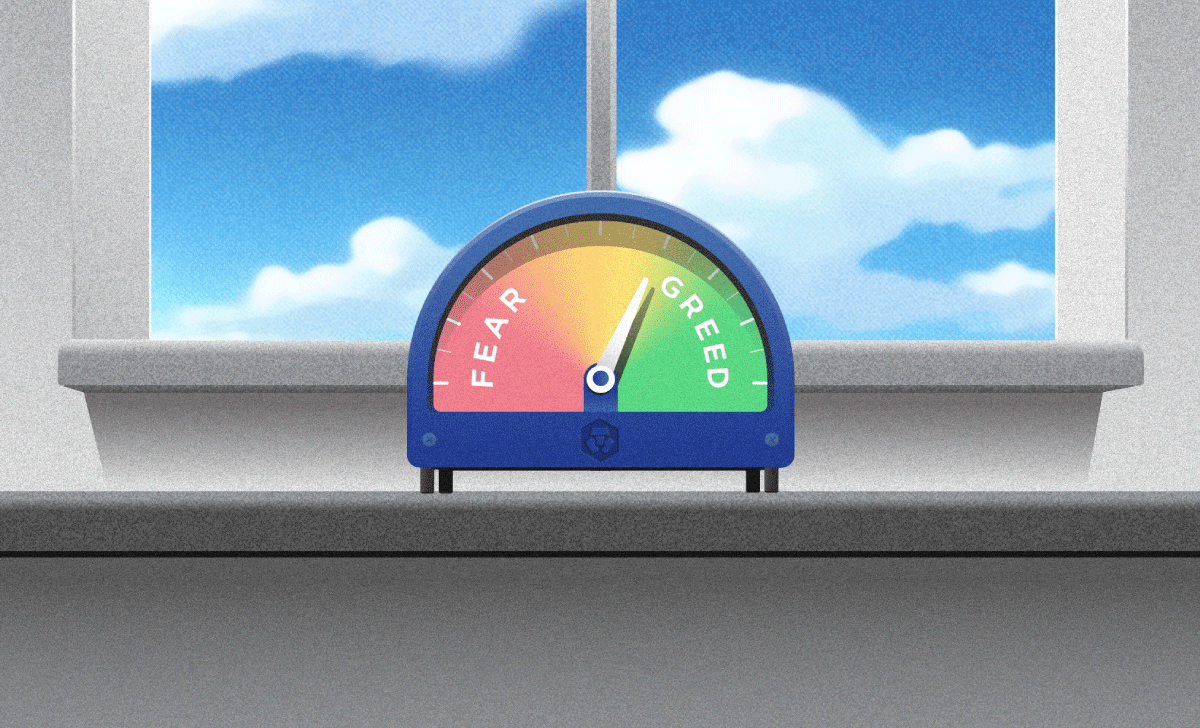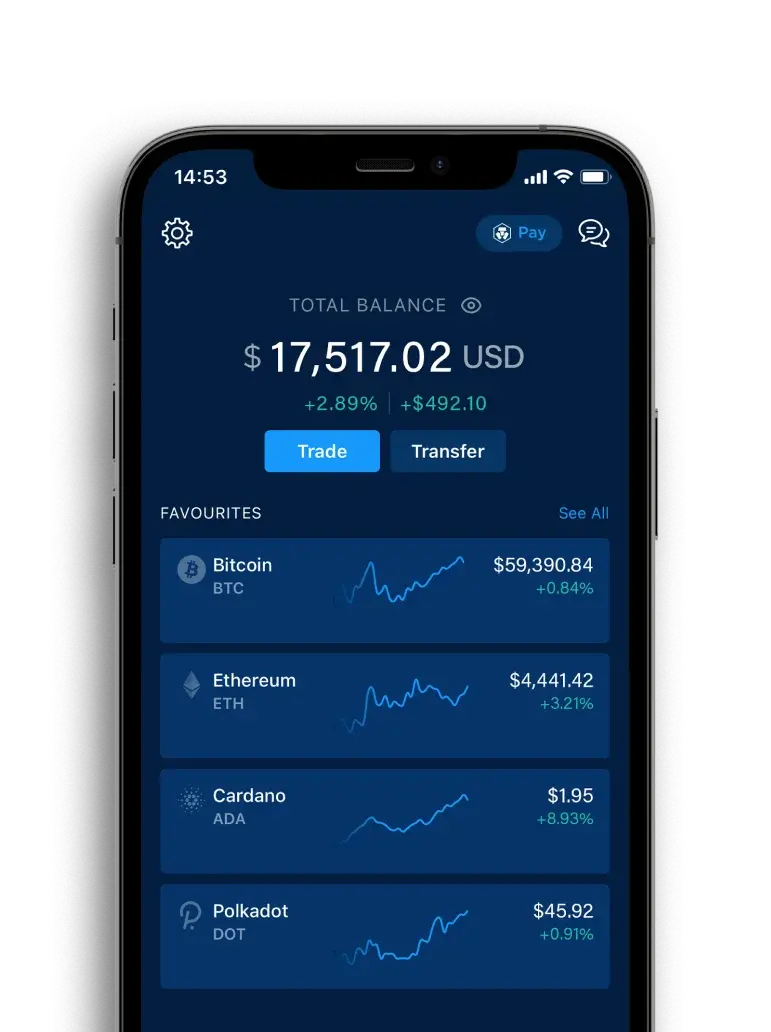
Key Takeaways:
- A Fear & Greed Index measures the sentiment of market participants.
- It is calculated using several metrics, including volatility, market momentum and volume, and social media sentiment.
- We discuss how to interpret market sentiment in high fear or extreme greed.
- Keeping an eye on the index can help market participants with decisions.
Introduction
Fear and greed are human emotions that we are all familiar with. Human psychology and our decision-making process are multifaceted and complex, involving a lot of factors, including emotions. In this article, we discuss how fear and greed affect the collective decision-making process, and how the Fear & Greed Index tries to demonstrate the impact of this influence on cryptocurrency markets.
The Crypto Fear & Greed Index
In crypto slang, the term FUD (‘fear, uncertainty, and doubt’) is used to denote misinformation or negative propaganda about a specific cryptocurrency asset, platform, or project. Such information appeals to one of the most fundamental human emotions — fear.
FUD can be unintentional when users misinterpret certain negative information, like market corrections, ascribing inaccurate causes to it. A classic example is when some users interpret a crypto market correction following a general economic downturn as “crypto is dead.” FUD tends to spread like wildfire, and with the advent of online communities, this can be very damaging when affecting individual projects.
FUD can also be intentional and orchestrated by individuals or entities that stand to gain from it, such as competitors of a project or big-wig investors (known as ‘whales’) who may sometimes use FUD to manipulate markets. It is worth mentioning that this can carry severe legal consequences in many jurisdictions.
What Is a Fear & Greed Index?
To start, let us understand how fear and greed affect the markets.
Fear
In a nutshell, when fear is the dominant emotion, market participants tend to be fearful of losing their capital. Concerned with market stability and the value of their token holdings, they might sell their assets. In addition, this can cause some traders to start short selling these assets in order to gain from the fear sentiment.
Fear is usually associated with declining markets or asset values, whether that decline is due to macroeconomic factors (such as inflation, recession, economic crises, or geopolitical factors), asset-specific factors (such as declining values of certain assets like an oil and gas price decline), or negative press on a crypto project that causes its token price to tumble.
Greed
In contrast, when greed is the dominant emotion, market participants tend to accumulate more assets and try not to miss out on the potential gains they can make. This happens when the markets and assets are trending upwards. Greed is usually accompanied by another kind of fear, which is commonly known as FOMO (‘fear of missing out’). In this case, market participants are afraid of missing out on potential gains.
The Fear & Greed Index
The original Fear & Greed Index is a key market indicator developed by CNN Money to measure how these two human emotions affected the stock market, with the goal to measure whether certain markets or assets are trading above their purported value due to greed or below their purported value due to fear. The Fear & Greed Index is presented as a spectrum ranging from extreme fear on one end to extreme greed on the other.
The CNN Fear & Greed Index relies on several factors to measure the presence and degree of fear and greed in stock markets. However, some of these factors are not applicable to cryptocurrency markets, which are unique in many ways. This has called for the development of a cryptocurrency-specific Fear & Greed Index.
How Is the Fear & Greed Index Calculated?
The original F&G Index developed by CNN Money relies on factors relevant to stock markets, including:
- Stock price momentum — Comparing the index against a 125-day moving average.
- Stock price strength — Number of stocks with prices hitting a one-year all-time high (ATH) versus the number of stocks with prices hitting a one-year all-time low.
- Trading volumes — Those of rising stocks versus trading volumes of those declining.
- Put and call options — More put options = fear; more call options = greed.
- Junk bond demand — Higher demand for bonds with an elevated default risk usually signals greed.
- Market volatility — Based on a 50-day moving average.
- Safe haven demand— Difference in yields of stocks versus those of treasuries, such as sovereign bonds.
Most of those factors are not directly applicable to cryptocurrency markets, but several cryptocurrency Fear & Greed Indexes have been subsequently developed, such as the one by Alternative.me, which uses the following weighted data sources:
- Volatility (25%) — Current market volatility and average values compared to the last 30 and 90 days: The higher the volatility, the higher the fear.
- Market momentum/volume (25%) — Comparing buy and sell volumes to the last 30 and 90 days: Higher buy volumes compared to the immediate past signify higher greed.
- Social media (15%) — Social media interest in Bitcoin, the volume of social media interactions, and the general sentiment.
- Surveys (15%) — Polling the opinions of users and investors.
- Dominance (10%) — Rise of Bitcoin dominance usually signals fear.
- Trends (10%)— Google search trends.
How to Read a Fear & Greed Index
The Fear & Greed Index presents a gauge that spans across the whole economic spectrum. On the lowest end of the spectrum lies peak fear value, while on the opposite end is peak greed value, with a range of possible values in between.
The Index is regularly updated based on the calculations and data sources to show the current, as well as historical, values. It shows a numeric value as well as the corresponding interpretation of it. For example, it can show “27 – Fear” or “85 – Extreme Greed,” etc.
Using the Crypto Fear & Greed Index
A Fear & Greed Index should be considered as one of many indicators that cryptocurrency traders utilise in their decision-making process, rather than a single determining factor. It is important to understand that any one indicator on its own might not be sufficient to make an informed decision. An index may be used by reading its current value, as well as recent historical values, in order to gauge both the current market sentiment and the direction in which it is trending.
For example, if the index shows an increasing fear sentiment over recent weeks (e.g., with changes from “48 – Fear” in a prior month to “30 – High Fear” the prior week to “23 – Extreme Fear” to date), it indicates that the general sentiment is, according to the index, fearful, and that the trend so far has been moving towards more fear.
This suggests that more and more market participants are disposing of assets, the market is in a downward/bearish direction, and there is a possibility that certain assets may be trading below their purported value.
Alternatively, if the index shows extreme greed and is trending to greedier over the previous weeks, this suggests that greed is dominant and markets are thus far in an upwards/bullish direction — and that some assets may be trading above their purported value.
It is important to understand that these indicators reflect the emotions of some market participants and are not definitive indicators of future market performance. It is also critical to avoid the ‘herd mentality’ of simply following the market sentiment without paying attention to other key indicators. In some situations, extreme fear or extreme greed can signal an upcoming turnaround in market conditions, which can be detrimental to market participants who miss the signs.
Crypto Fear & Greed Indexes provide a pulse check of the market sentiment that could be used — amongst other indicators — to understand the market situation. There are several indexes available, such as Alternative.me’s index. Crypto.com is launching its own Fear & Greed Index soon, so stay tuned!
Due Diligence and Do Your Own Research
All examples listed in this article are for informational purposes only. You should not construe any such information or other material as legal, tax, investment, financial, cybersecurity, or other advice. Nothing contained herein shall constitute a solicitation, recommendation, endorsement, or offer by Crypto.com to invest, buy, or sell any crypto assets. Returns on the buying and selling of crypto assets may be subject to tax, including capital gains tax, in your jurisdiction. Any descriptions of Crypto.com products or features are merely for illustrative purposes and do not constitute an endorsement, invitation, or solicitation.
Past performance is not a guarantee or predictor of future performance. The value of crypto assets can increase or decrease, and you could lose all or a substantial amount of your purchase price. When assessing a crypto asset, it’s essential for you to do your research and due diligence to make the best possible judgement, as any purchases shall be your sole responsibility.





